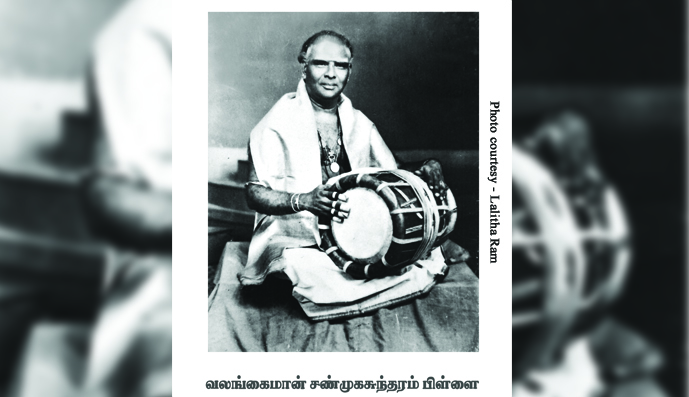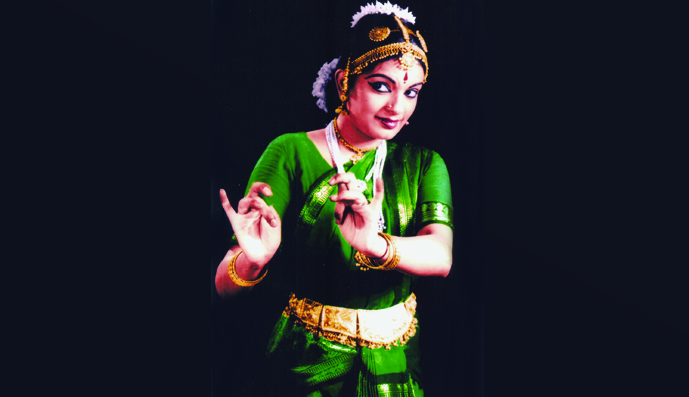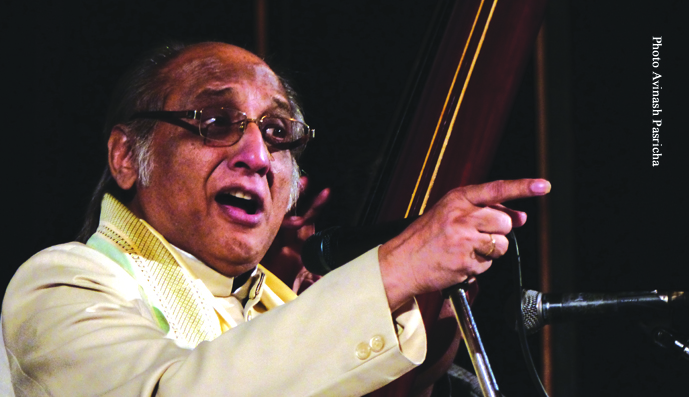The legendary tavil vidwan Valangaiman Shanmugasundaram Pillai was neither born in Valangaiman nor did he spend his childhood years in Valangaiman, a town in Tiruvarur district in Tamil Nadu. He was born in Segal Madappuram, a village near Tiruturaipoondi on 3 April 1920 (some mention it as 2 April). Shanmugasundaram was born with music in his blood, since his family consisted of many renowned nagaswara and tavil vidwans. Born to V. Arumugam Pillai (through his fist wife), Shanmugasundaram started his tavil lessons under his father’s guidance when he was five years old. The family moved to Jaffna in Sri Lanka. He continued his training with Inuvil Chinnathambi Pillai and Rajagopala Pillai and made his debut when he was just 15 years old. When he was 17, he returned to India for advanced lessons and came under the wings of the laya wizard Nachiarkoil Raghava Pillai—seniormost disciple and son-in-law of Needamangalam Meenakshisundaram Pillai and a great tavil artist himself. Early in his career he was known as ‘Yazhpanam Shanmugasundaram Pillai’. He had the opportunity to learn a number of jatis for the 108 talas and many other rhythmic formulae from his guru Raghava Pillai and also from his own paternal uncle, Tandalacheri Seetarama Pillai, who was known as a ‘tiger’ in rhythmic mathematics.
Senior mridangist J. Vaidhyanathan believes his commitment to accompaniment begins right from arriving well on time for the concert. “A concert is like a yagna, a lot of effort—we should not cause any consternation to either the organiser or the artists—rather, we should ensure that we do whatever we can to keep them calm, thus ensuring the best output from the artists. Also, regardless of who the artist is or his/her seniority levels, everyone should be treated on an equal footing on stage,” says Vaidhyanathan. The youngest of three children, Vaidhyanathan was born to Sangita Kalanidhi D.K. Jayaraman and his wife J. Jayalakshmi on 22 April 1965 in Damal, near Kanchipuram in Tamil Nadu. The family moved to Chennai a few years after his birth. His aunt Sangita Kalanidhi D.K. Pattammal, a colossus in Carnatic music, was already in Chennai. Music, thus, was the most natural foray for Vaidhyanathan.
A trendsetter in creating dance productions for stage, television and the celluloid media, Radhika Shurajit has carved a niche for herself by taking Bharatanatyam to the common man through the visual medium. Eldest of the Trio Sisters, Radhika who turns 60 on 18 June 2021, is one of the first and seniormost disciples of the Dhananjayans. She has also honed her abhinaya skills under the guidance of Kalanidhi Narayanan and learnt Carnatic music from violinist T.K. Padmanabhan. She is an established performer, teacher, choreographer, media visualiser and television director. Radhika, along with her sisters Gayatri and Shobana, has performed in numerous places across India and in several international festivals in the U.S.A., erstwhile U.S.S.R., the U.K., Europe, Australia, the Middle East and countries in South America and Africa. The popular trio has performed on their own as well as travelled with their famous gurus.
The untimely passing away of the “khalifa” of the Delhi gharana (as he was popularly known), Ustad Iqbal Ahmed Khan, has left the world of north Indian music in a state of shock. At 67 and without any health problems, his sudden death is a huge loss. The musical tradition of the Delhi gharana originated from Amir Khusrau (1253-1325), who taught disciples the hitherto unknown tradition in India of qawwal; with passage of time the inheritors of that music absorbed elements of instrumental music, and khayal gayaki as well. Khayal gayaki was conceived and popularised in the court of Muhammed Shah Rangile (1719-1748) by his court musician Niamat Khan, also known as Sadarang, descendant of Tansen through his daughter.
CONTENTS
6 Sruti
box
8 News
& notes
14 Birthday
calendar
16 Valangaiman
Shanmugasundaram Pillai
20 J.
Vaidhyanathan
28 Music
season (part 3)
v
Third edition of Kala Samprekshana
v
Some concerts, other venues
v
A potpourri
36 Popular
choreographers v
Radhika Shurajit
41 Analysis
v
Nritya karana
44 Centenary
tribute v
B.V. Raman and B.V. Lakshmanan
47 Snapshorts
48 Tribute
v
Iqbal Ahmed Khan Nizami
50 From
the Editor
Front Cover: Valangaiman Shanmugasundaram
Pillai
J. Vaidhyanathan (photo by Hemamalini S.)
No. 439






